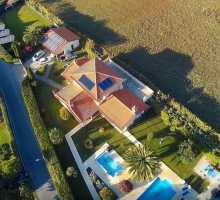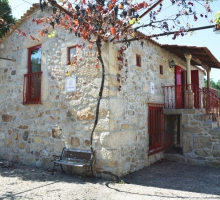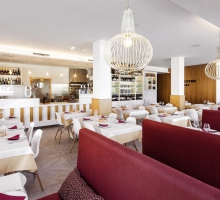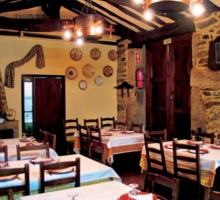In the highest top of the granite residual relieves of the Freita Mountain there are several alveolar forms in its surface, called pits or gnamas. The Pias do Serlei geosite is situated over an area where there are many granite blocks, some of them with interesting shapes, presenting several pits. It is probably the Freita mountain’s region where we can find the biggest number of pits, with different degrees of development concentrated in one area.
Pits are small sub-circular or elliptical depressions that can, however, present more complex shapes due to the coalescence of individual pits. They have a variable diameter, of about 30 cm and 1 m, in the latter case when the coalescence occurs.
The genesis and evolution of these granite microforms suggest a multiphase origin. Initially they have developed under the regolith, with clear reflection of the irregular penetration of the alteration front, which originated an entire set of irregularities in the rocky surface. After the exhumation of this surface, the pits have developed along these irregularities, which are preferential places for the reception and accumulation of water. The water is the essential factor for the evolution of these geoforms, as it provides reactions to mineral hydrolysis, hydration and dissolution, causing a differential weathering in the alteration front, as well as the growth and differentiation of the pits after its subaerial exposure. In the Pias do Serlei geosite, there are several granite blocks with multiple pits with different levels of development, allowing the analysis by steps of evolution.
Location: Arouca
Pits are small sub-circular or elliptical depressions that can, however, present more complex shapes due to the coalescence of individual pits. They have a variable diameter, of about 30 cm and 1 m, in the latter case when the coalescence occurs.
The genesis and evolution of these granite microforms suggest a multiphase origin. Initially they have developed under the regolith, with clear reflection of the irregular penetration of the alteration front, which originated an entire set of irregularities in the rocky surface. After the exhumation of this surface, the pits have developed along these irregularities, which are preferential places for the reception and accumulation of water. The water is the essential factor for the evolution of these geoforms, as it provides reactions to mineral hydrolysis, hydration and dissolution, causing a differential weathering in the alteration front, as well as the growth and differentiation of the pits after its subaerial exposure. In the Pias do Serlei geosite, there are several granite blocks with multiple pits with different levels of development, allowing the analysis by steps of evolution.
Location: Arouca




